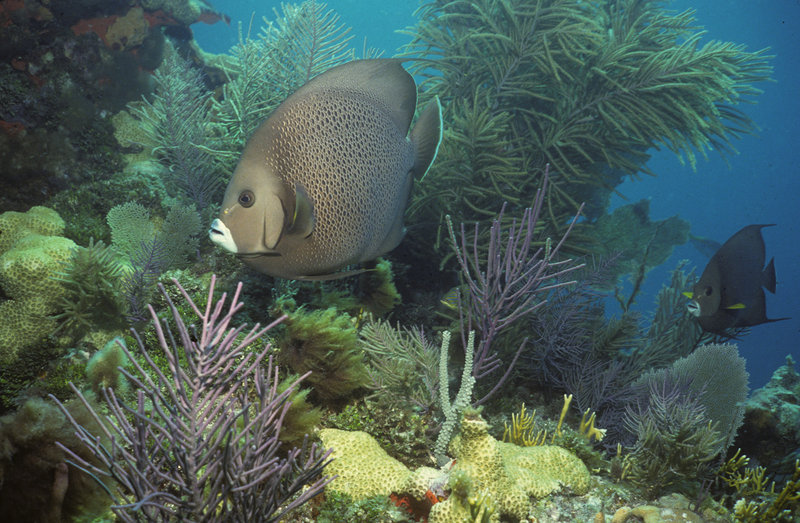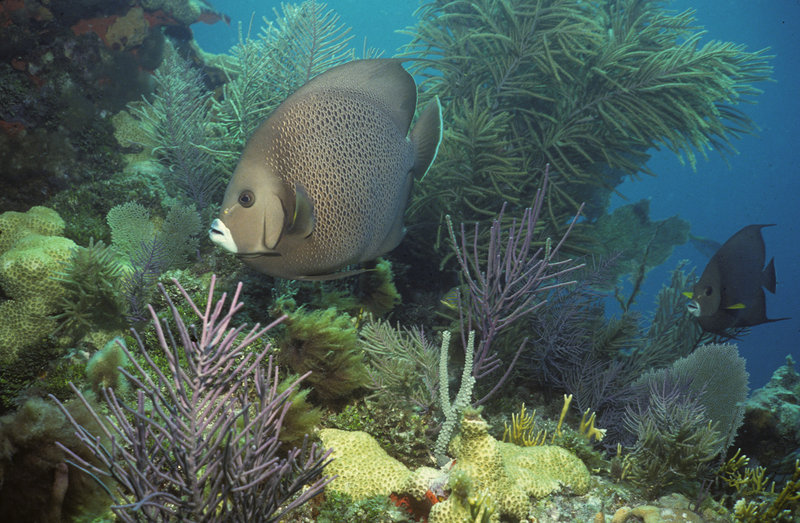ROBERT, La. – With BP finally gaining some control over the amount of oil spewing into the Gulf of Mexico, scientists are increasingly worried that huge plumes of crude already spilled could get caught in a current that would carry the mess all the way to the Florida Keys and beyond, damaging coral reefs and killing wildlife.
Scientists said the oil will move into the so-called loop current soon if it hasn’t already, although they could not say exactly when or how much there would be. Once it is in the loop, it could take 10 days or longer to reach the Keys.
“It’s only a question of when,” said Peter Ortner, a University of Miami oceanographer.
NOAA HEAD DISPUTES ESTIMATES
In the month since an offshore drilling platform exploded, killing 11 workers, BP has struggled to stop the leak, trying in vain to activate emergency valves and lowering a 100-ton box that got clogged with icy crystals.
Over the weekend, the oil company finally succeeded in using a stopper-and-tube combination to siphon some of the gushing oil into a tanker, but millions of gallons are already in the Gulf.
BP continues to estimate the spill at 210,000 gallons of crude a day, although independent experts have estimated that the well may be leaking as much as 2.9 million gallons a day.
Government scientists have offered no confirmation of higher estimates, and the head of the National Oceanographic and Atmospheric Administration on Monday was critical of them and of published reports that large plumes of oil had been detected below the Gulf’s surface.
Government officials Monday also disputed whether the oil had reached the Gulf’s powerful loop current.
The loop current is a ribbon of warm water that begins in the Gulf of Mexico and wraps around Florida. Some scientists project the current will draw the crude through the Keys and then up Florida’s Atlantic Coast, where the oil might avoid the beaches of Miami and Fort Lauderdale but could wash up around Palm Beach.
“We know that the oil has not entered the loop current at this time,” said Coast Guard Rear Adm. Mary Landry, briefing reporters. “There might be some leading-edge sheen that’s getting closer to the loop current, but this spill has not entered the loop current.”
William Hogarth, dean of the University of South Florida’s College of Marine Science, said one computer model showed that oil had already entered the loop current, while a second model showed the oil was three miles from it. Mike Sole, Florida’s environmental protection secretary, said the edge could still be two to 18 miles away.
Many scientists expect the oil to get no farther north than Cape Canaveral, midway up the coast, before it is carried out to sea and becomes more and more diluted.
CORALS AT RISK
The pollution could endanger Florida’s shoreline mangroves, seagrass beds and the third-longest barrier reef in the world, the 221-mile-long Florida Keys National Marine Sanctuary, which helps draw millions of snorkelers, fishermen and other tourists whose dollars are vital to the state’s economy.
Pollutants can smother and kill corals — living creatures that excrete a hard exterior skeleton — or can hinder their ability to reproduce and grow. That, in turn, could harm thousands of species of exotic and colorful fish and other marine life that live in and around reefs.
BP said it is having some success with a mile-long tube that is funneling a little more than 42,000 gallons of crude a day from the well into a tanker ship. That would be about a fifth of the 210,000 gallons the company estimated is gushing out each day, ALthough scientists who have studied video of the leak say it could be much bigger.
Crews will slowly increase how much they are collecting over the next few days. They need to move slowly to prevent the formation of the ice-like crystals that doomed the effort to lower a big concrete-and-steel box over the blown-out well.
BP initially said it hoped the system would capture most of the leaking oil, but Doug Suttles, BP chief operating officer, said Monday that officials would be pleased if the tube eventually sucks up half of it.
The siphoning is not a permanent solution. BP is preparing to shoot a mixture known as drilling mud into the well later this week in a procedure called a “top-kill” that would take several weeks but, if successful, would stop the flow altogether. Two relief wells are also being drilled to pump cement into the well to close it, but that will take months.
Chemicals being sprayed underwater are helping to disperse the oil and keep it from washing ashore in great quantities, but researchers said that in recent days they have discovered miles-long underwater plumes of oil that could poison or suffocate sea life across the food chain, with damage that could last for a decade or more.
CROSSING THE THRESHOLD
The Coast Guard’s Landry acknowledged concerns about the unprecedented use of dispersants in deep water. However, she defended their use, which the Environmental Protection Agency approved.
“That threshold we crossed was not done lightly,” Landry said. “It was done in cooperation with all the federal agencies. It does allow us to use less by volume than using it on the surface. It’s all a series of trade-offs. We are really trying to minimize the environmental impact of all these methods being done.”
NOAA Administrator Jane Lubchenco said Monday that the researchers’ announcement of the oil plumes was premature and that further tests are needed to confirm that the plumes detected were indeed caused by the blowout.
– The Associated Press and The Miami Herald contributed to this report.
Send questions/comments to the editors.




Success. Please wait for the page to reload. If the page does not reload within 5 seconds, please refresh the page.
Enter your email and password to access comments.
Hi, to comment on stories you must . This profile is in addition to your subscription and website login.
Already have a commenting profile? .
Invalid username/password.
Please check your email to confirm and complete your registration.
Only subscribers are eligible to post comments. Please subscribe or login first for digital access. Here’s why.
Use the form below to reset your password. When you've submitted your account email, we will send an email with a reset code.